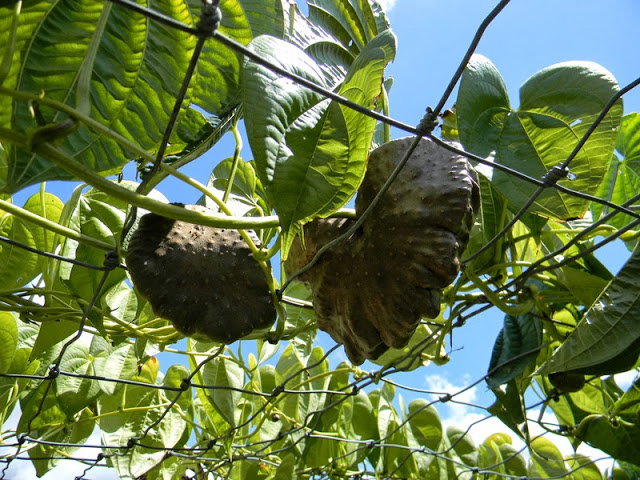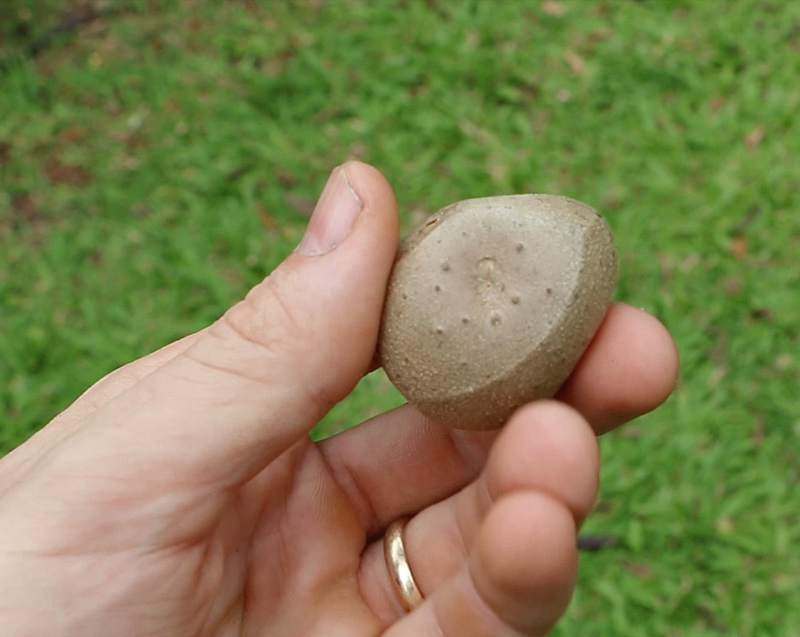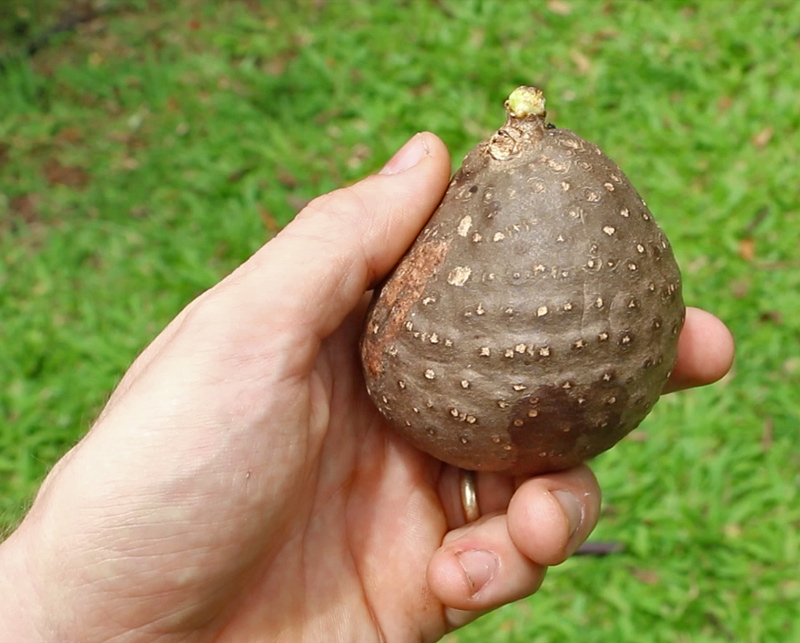Eric Toensmeier mentions edible Dioscorea bulbifera in at least one of his books.
Yet the D. bulbifera growing all over my home state of Florida were anything but edible. Known as “air potatoes,” these guys can mess you up.
According to Infogalactic:
“Uncultivated forms, such as those found growing wild in Florida, can be poisonous. These varieties contain the steroid diosgenin, which is a principal material used in the manufacture of a number of synthetic steroidal hormones, such as those used in hormonal contraception.[6] There have been claims[7] that even the wild forms are rendered edible after drying and boiling, leading to confusion over actual toxicity.”
Yet there are definitely edible versions.
In a video from 2015, I show off a beautiful bulbil I was given by a friend:
The cultivated forms of D. bulbifera really have a lot of potential as a food crop, due to their ease of growing and harvest. Picking roots from the air is a lot better than digging.
As I dug for more info, I found that gardener Jerry Coleby-Williams has a good article with photos of edible Dioscorea bulbifera varieties he’s growing in Australia.
His look quite different from the variety featured in the video above.
Here’s a shot of that crazy angular type:

Very weird.
The two edible Dioscorea bulbifera bulbils I was given this last week look quite different from each other.
The first one looks like it may be the type above, though this is a much smaller bulbil:

The second one I was given looks rather like some of the wild toxic forms I saw in Florida:

That doesn’t mean it is toxic, however – looks aren’t important. The diosgenin content is. If it tastes bitter after cooking, chances are it’s not a good one.
Varieties of Edible Dioscorea bulbifera
Back in December Grower Jim did a write-up on some of the edible Dioscorea bulbifera types on his site. He writes:
“There are a few different cultivated varieties in circulation; ‘Hawaii’ has dark, rounded tubers with a bumpy skin and glossy sheen. ‘Africa’ has gray, angular tubers with a rougher texture.”
Click over to his site to see the photos and read the article.
“Hawaii” looks like a less bumpy version of my second edible Dioscorea bulbifera bulbil.
Here’s the video I made yesterday showing both of my edible D. bulbifera bulbils, plus how I planted them:
It seems there are quite a few types of D. bulbifera.
If we are blessed with a good growing year and a harvest, I will taste-test these carefully. One farmer told me that you need to leave the bulbils out on a counter for a while before eating to get rid of the bitterness.
I’ll try that and also cook them well, trying only a little bit the first time. I’m excited to get a chance to grow these guys and will keep you updated.
ADDENDUM
Don’t get D. bulbifera mixed up with D. alata.
Both grow wild in Florida and other locations and it’s important to not randomly harvest and eat yams. D. alata are delicious and safe – but D. bulbifera in the wild can lead to bad side effects.
Read my post on identifying edible air potatoes in the wild here.
And if you are interested in Florida gardening without work, get my book Totally Crazy Easy Florida Gardening here. I cover yams and many other super-easy crops that will get you growing piles of food in no time.


4 comments
that second one looks like it could be d. pentaphylla, which is currently being touted as the next edible air potato, since it is supposedly resistant to the beetle that is tearing through the bulbiferas. I’ve got a couple I’ll be testing this summer, fingers crossed!
That would be really cool. We’ll find out when it starts making leaves! Thank you for the info.
I grow and eat a varity of wild chinese yam that makes small edible air potatoes that taste like potatoes and also have an edible root. They are grown commercially for the root in china and japan .I also grow a chinese medicinal called fo- ti that has medicinal value
I’d like to plan edible Dioscorea bulbifera in my backyard. Do you sell this?
Comments are closed.